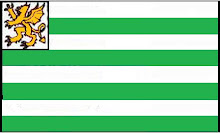 Looking north towards Hindon, late January
Looking north towards Hindon, late JanuaryHindon, now a small village once was a 'rotten borough' and sent two Members to Parliament. The votes were negotiable in those days before the secret ballot and were paid for; copious quantities of beer and wine usually did the trick. In 1812, local character William Beckford ( of which more will be said in other posts ) managed to spend the very considerable sum of £2,641.8s.4d to get elected.
The ploughed area behind the church steeple once was the site of a fair, at which cattle were sold. (14,000+ in a week I have read) Cattle arrived by means of drover's roads over the downs; Hindon is near the intersection of these ancient roads. The roads had generous verges which allowed the cattle to graze along the way. The presence of Scots Pine trees alongside the road or track is a good indicator of an ancient drover's road.
 old drovers road, very wide verge and Scots Pine trees.
old drovers road, very wide verge and Scots Pine trees.
The ploughed area behind the church steeple once was the site of a fair, at which cattle were sold. (14,000+ in a week I have read) Cattle arrived by means of drover's roads over the downs; Hindon is near the intersection of these ancient roads. The roads had generous verges which allowed the cattle to graze along the way. The presence of Scots Pine trees alongside the road or track is a good indicator of an ancient drover's road.
 old drovers road, very wide verge and Scots Pine trees.
old drovers road, very wide verge and Scots Pine trees.The photograph above is a drover's road near a place called by locals, confusingly, 'One Mile Up Two Mile Down'; to explain..... a down is an area of upland, this ridge of upland is about two miles long running from Hindon to Willoughby Hedge ( on the A303 ). The place photographed is reckoned to be one mile from Hindon.... hence the name.
In the old records for East Knoyle, the adjacent parish, there is a mention of a farmer called Willoughby, who presumably planted a hedge, and is now immortalised by a filling station, Little Chef and a services lay-by at a place known now as Willoughby Hedge.
In the old records for East Knoyle, the adjacent parish, there is a mention of a farmer called Willoughby, who presumably planted a hedge, and is now immortalised by a filling station, Little Chef and a services lay-by at a place known now as Willoughby Hedge.

No comments:
Post a Comment